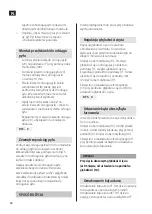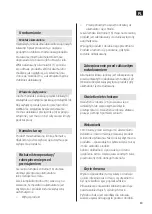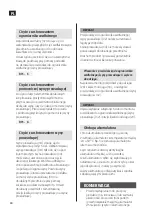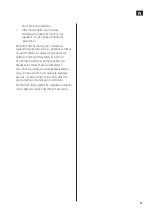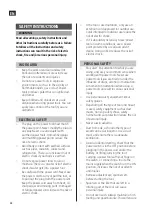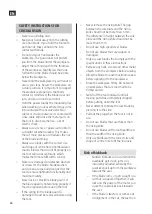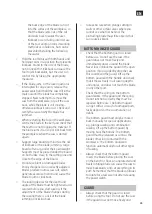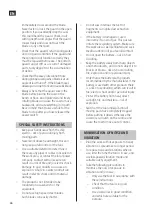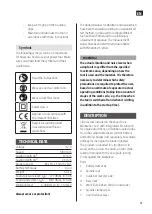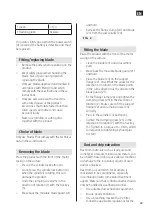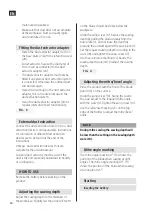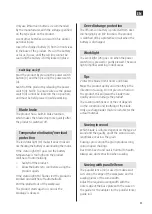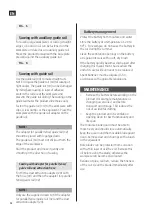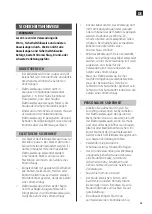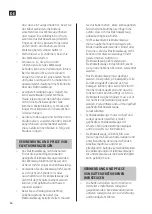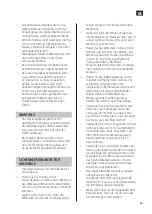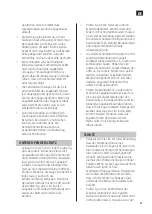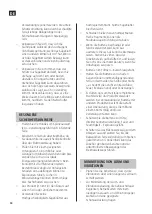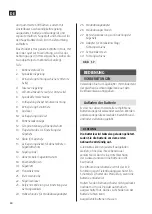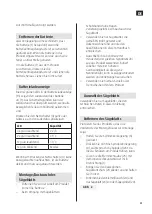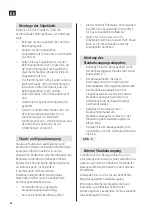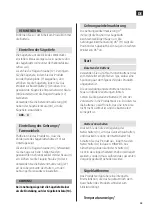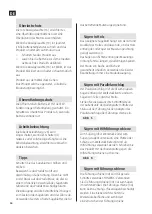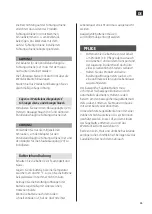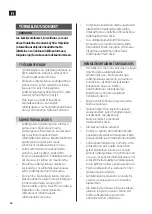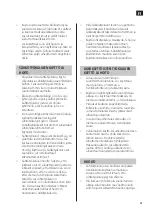
EN
52
FIG. 5
Sawing with auxiliary guide rail
For sawing large workpieces or sawing straight
edges, a board or rail can be fastened on the
workpiece and used as an auxiliary guide rail
Move the product forward with the base plate
pressed against the auxiliary guide rail.
FIG. 6
Sawing with guide rail
Use the guide rail (34) to make straight cuts.
NOTE: Only use the guide rail (34) for sawing at
right angles. The guide rail (34) can be damaged
by mitre/bevel sawing. A layer of adhesive
protects the surface of the workpiece and
prevents the guide rail sliding. The coating on the
guide rail makes the product slide more easily.
Fasten the guide rail (34) to the workpiece with
clips, screw clamps or the equivalent. Place the
workpiece with the guide rail adapter on the
guide rail.
NOTE:
The adapter for parallel fence/guide rail (32)
should be placed with logotype down.
The guide rail (34) must not stick out from the
edge of the workpiece.
Start the product and move it gently and
smoothly in the direction of sawing.
Sawing with adapter for parallel fence/
guide rail and extraction hose
First fit the dust extraction adapter (29) with
the hose (30) and then the adapter for parallel
fence/guide rail (32).
NOTE:
Only use the supplied screws to fit the adapter
for parallel fence/guide rail (32) and the dust
extraction adapter (29).
Battery management
Protect the battery from moisture and water.
Store the battery at a temperature of -20 to
50°C. For example, do not leave the battery in
the car during the summer.
Clean the ventilation openings on the battery
at regular intervals with a soft, dry brush.
If the battery quickly becomes discharged after
charging this means that it has reached the
end of its useful life an needs to be replaced.
Spent batteries must be disposed of in
accordance with applicable regulations.
MAINTENANCE
• Remove the battery before working on the
product (for example maintenance or
changing accessories) and before
transport and storage. This reduces the
risk of accidental starting.
• Keep the product and its ventilation
opening clean for best functionality and
life span.
The movable blade guard must be able to
move freely and should close automatically.
Keep the area round the movable blade guard
clean. Remove dust and shavings with a brush
or the equivalent.
Bare blades can be protected from corrosion
with a thin layer of acid free oil. Remove this
oil before using the blade, otherwise the
workpiece can become discoloured.
Residue of glue, resin etc, reduce the fineness
of the cut. Clean the blade immediately after
use.

